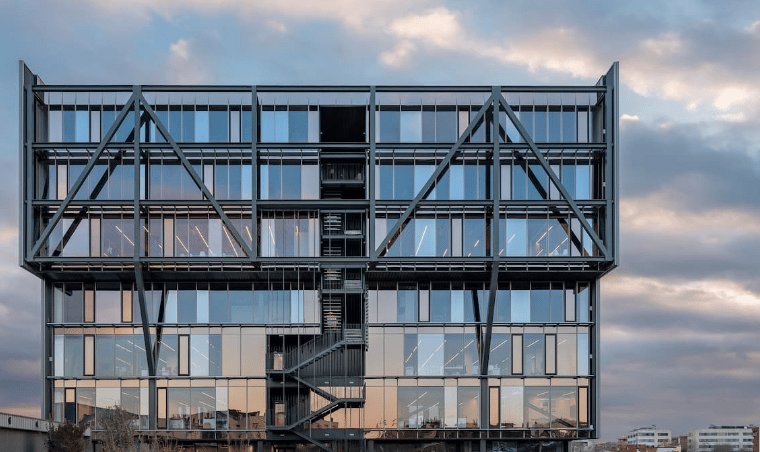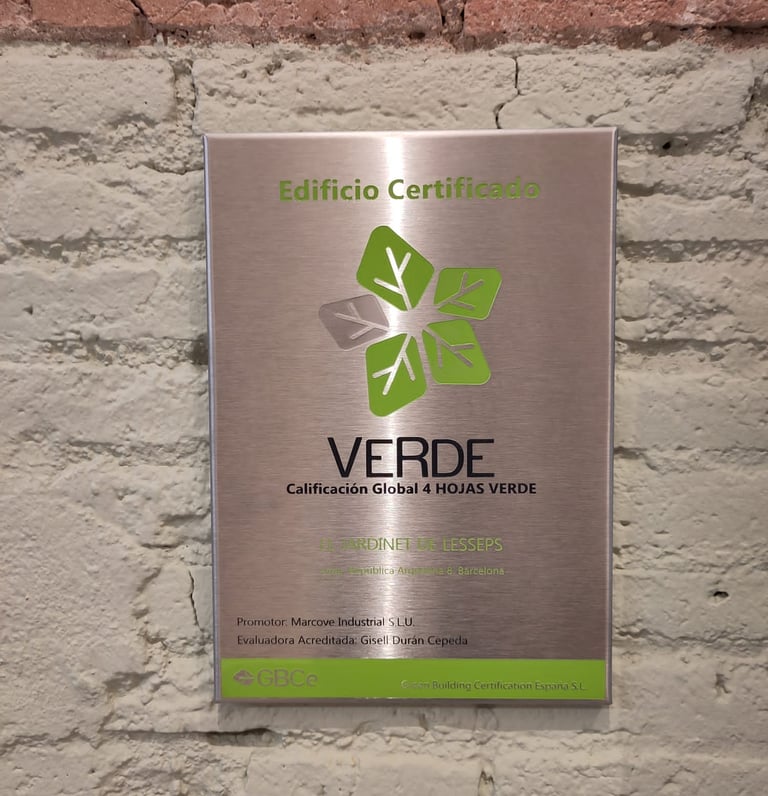Everything You Need to Know About Sustainable Building Certification: Benefits, Types, and Process
INVESTIGACIÓN


Introduction to Sustainable Building Certification
In a world where sustainability has become a fundamental pillar, sustainable building certification emerges as a comprehensive solution to mitigate the environmental impact of construction. This certification goes beyond energy efficiency—it also covers water conservation, indoor air quality, and waste management. Sustainable certification evaluates and recognizes the practices and materials used during the construction and operation of a building, ensuring they meet rigorous environmental standards.
Sustainable certification is not just a quality seal; it represents a real and tangible commitment to the environment and society. For architects and developers, it’s a way to demonstrate responsibility and leadership in adopting sustainable practices. For owners and occupants, it guarantees a healthy and efficient environment, contributing to better quality of life and long-term reductions in operating costs.
Interest in sustainable certification has grown exponentially in recent years, driven by increasing consumer awareness and stricter government regulations. In this context, it’s crucial to gain a deep understanding of what this process involves, the benefits it offers, the types of certifications available, and how to obtain them. This article will provide you with a complete guide to navigating the complex yet rewarding path toward sustainable building certification.
The Importance of Sustainability in Construction
Sustainability in construction is a direct response to the environmental and social challenges our society faces. The construction industry is one of the largest consumers of natural resources and a major source of greenhouse gas emissions. Adopting sustainable practices is essential to reducing environmental impact and promoting a more efficient and responsible use of resources.
Beyond environmental concerns, sustainability in construction also addresses social and economic issues. Sustainable buildings are designed to improve the quality of life for their occupants by creating healthier and more comfortable spaces. This includes better indoor air quality, natural lighting, and temperature control, which can lead to increased productivity and overall well-being. In addition, sustainable practices can significantly lower operational costs, as certified buildings tend to be more energy- and water-efficient.
The importance of sustainability in construction is also reflected in government policies and regulations. Many countries are implementing standards that require sustainable practices and encourage building certification. These policies aim not only to protect the environment but also to drive innovation and competitiveness in the construction sector. In short, sustainability in construction is not just a trend—it is an urgent necessity that delivers wide-ranging benefits on environmental, social, and economic levels.
Benefits of Obtaining a Sustainable Building Certification
Obtaining a sustainable building certification offers a range of benefits that go far beyond formal recognition. One of the most significant advantages is the reduction of environmental impact. Certified buildings use less energy and water, and generate less waste, resulting in a lower carbon footprint and a meaningful contribution to the fight against climate change. Additionally, sustainable buildings often use recycled and responsibly sourced materials, reducing the demand for natural resources.
Another key benefit is the improvement of occupant health and well-being. Sustainable buildings are designed to provide a healthy indoor environment, featuring better air quality, natural lighting, and thermal comfort. These elements can reduce the incidence of illness and enhance occupant productivity and comfort. In work environments, this can lead to lower absenteeism rates and higher employee satisfaction.


From an economic perspective, sustainable certification can increase property value and attract tenants more quickly. Certified buildings typically have lower operating costs due to their energy and resource efficiency, which can lead to significant long-term savings. Additionally, certification can enhance a company’s reputation and brand image by demonstrating a strong commitment to sustainability and social responsibility.
In summary, the benefits of obtaining a sustainable certification are wide-ranging and encompass environmental, social, and economic aspects—offering a meaningful return on investment.

Most Recognized Types of
Sustainable Building Certifications
There are several types of globally recognized sustainable building certifications, each with its own criteria and focus areas. One of the most well-known certifications is LEED (Leadership in Energy and Environmental Design), developed by the U.S. Green Building Council. LEED assesses a wide range of factors, including energy efficiency, water use, indoor environmental quality, and material selection. Buildings can achieve different LEED certification levels, from Certified to Platinum, based on the points earned.
Another prominent certification is BREEAM (Building Research Establishment Environmental Assessment Method), originating in the United Kingdom. BREEAM is one of the oldest certifications and is widely used across Europe. It evaluates aspects such as building management, health and well-being, energy, transport, water, materials, waste, pollution, and land use. BREEAM also offers certification levels ranging from Pass to Outstanding.
The WELL certification is relatively new and focuses specifically on occupant health and well-being. Developed by the International WELL Building Institute, it assesses factors such as air, water, nutrition, light, fitness, comfort, and mental health. WELL complements other sustainability certifications by emphasizing how the built environment influences people’s health and wellness.
In Spain, the VERDE certification plays a key role in promoting sustainability and energy efficiency in the construction sector. Among the most relevant certifications is the VERDE Certificate, developed by the Green Building Council España (GBCe) in 2009. It has become a fundamental tool for evaluating and accrediting the environmental sustainability of buildings in the country.
The VERDE Certificate (Valoración de Eficiencia de Referencia de Edificios) is specifically designed to measure the environmental impact of buildings in terms of sustainability. This system evaluates various factors such as:
Besides these, there are other certifications tailored to local conditions and regulations. Choosing the right certification depends on several factors, including the building’s location, project type, and specific sustainability goals. Understanding the differences and unique features of each certification is essential for making an informed decision.
